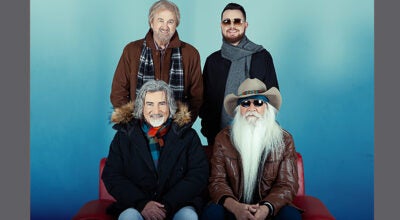‘Grand Review’ greatest parade in history
Published 12:00 am Sunday, October 16, 2011
Following its defeat at Bentonville, N.C., on March 21, 1865, the Confederate army of Joseph E. Johnston contained 30,000 effectives—less than half of Sherman’s Union command.
In early April, Johnston heard of Robert E. Lee’s surrender at Appomattox. Lee had been trying to get to Johnston and unite their two armies in the Carolinas. Johnston met with President Jefferson Davis and urged him to seek peace.
William T. Sherman, Johnston’s adversary in the Carolina theater, entertained the thought of peace negotiations. Near Durham Station, N.C., Sherman met General Johnston on April 17, 1865. The two-day peace conference occurred at the James Bennett home near Durham Station. Both generals were in agreement on terms of peace.
Sherman would say that he wrote the peace terms which he thought “concisely expressed the dead President’s views and wishes.” When Sherman’s peace conditions reached Washington, D.C., President Andrew Johnson called a cabinet meeting.
The cabinet promptly rejected the “Memorandum on Basis of Agreements.” Statements issued to Washington newspapers widened the criticism of Sherman. Edwin M. Stanton, Secretary of War, was behind the anti-Sherman actions. Newspapers called Sherman a traitor and said he might be having mental disturbances again. Stanton sent Lt. Gen. Ulysses Grant to North Carolina to re-work the peace conditions for Johnston’s surrender.
Grant “stayed in the shadows” and advised Sherman, so as not to humiliate Sherman. On April 26, 1865, terms for surrender were based upon those conditions Grant gave Lee at Appomattox. This occurred on April 26, 1865, and is considered the second most important Southern surrender. Sherman then read five-day-old newspapers and learned of Stanton’s personal attacks on him.
A burning hatred was fostered against Stanton. Sherman vowed the rest of his life that his original terms had been “right, honest, and good.”
Stanton and the Radical Republican faction were angry with Sherman and afraid of him. Stanton told many reporters that Sherman was guilty of insubordination, stupidity, and treason.
While thinking his terms to Johnston were what Lincoln would have wanted, most historians agree that Sherman exceeded his authority by including political questions in the agreement.
Rumors spread that Sherman and his Western Army might overthrow the country. Sherman’s fame had been tainted and his popularity reduced. The lines were drawn between the Union’s second most popular general and the Secretary of War.
The mustering-out of one million “men in blue” had begun at the end of April. On every hill and ridge around Washington, soldiers’ camps sounded music during the day and displayed glowing campfires at night.
The military trial of Lincoln conspirators was suspended, as the last and greatest pageant of the War was about to begin. This was a celebration of Union victory.
No one really knows who came up with the idea for a “Grand Review” in Washington, D.C., where Meade’s Army of the Potomac would march on May 23, 1865, and Sherman’s Army of Georgia and Army of the Tennessee would march on May 24, 1865.
These two day displays evolved into the greatest parade in American history. Washington officials favored the Army of the Potomac, winner of the Civil War in the East and sneered at Sherman’s armies who wore ragged uniforms and in some cases, no shoes. These “western men” were called “Sherman’s Greasers.”
For five days before the “Review,” workers decorated every public building and arches of flowers looked down on Pennsylvania Avenue. Washington, D.C., however, was still officially in mourning for Lincoln.
At 9 a.m., on May 23, 1865, a signal gun boomed to start the “Review.”
The Army of the Potomac wore clean uniforms, shined shoes, white gloves, and their bayonets gleamed like a sea of steel.
Their bands played “The Battle Hymn of the Republic.” Meade led this army as Grant sat under a covered pavilion with President Johnson and Secretary of War Edwin Stanton. Of course, George A. Custer rode by with his golden hair, crimson necktie, and buckskin trousers.
There were Zouaves, Irish units, the artillery, and the bullet-torn battle flags. It took the Army of the Potomac seven hours to pass by. The men in this army presented a splendid appearance, more than 80,000 of them.
Sherman’s Western Army had not been on parade for about a year. Sherman was worried the Army of the Potomac would embarrass his men in the “Review.” He told his high officers to have their men keep their eyes 15 feet to the front.
At 9 a.m. on May 24, 1865, the Army of the Tennessee came around a corner. A newspaper reporter guessed that 200,000 had come to see “Sherman’s boys.” The 65,000 Westerners marched with a two to four inch greater stride than the soldiers of Meade.
They possessed a distinct swagger. As Sherman led his men past the Treasury Building, he turned to look back for the first time. It was, he said, “the happiest and most satisfactory moment of my life.” His bands played “Marching through Georgia.”
In Sherman’s line were signal men, southern mules and horses, pigs on ropes, chickens, corps of Southern black laborers carrying picks and axes, ambulances with blood-stained stretchers, and riding sidesaddle, Mary Anne Bickerdyke, the “Angel of the Army” who had nursed the men. It took 7½ hours for the Army to pass.
Sherman dismounted and sat under the pavilion. He hugged his wife and son and shook hands with politicians and military men. Stanton stood up and extended his hand. Sherman said, “I declined it publicly.” Many of the Western Army felt Lincoln had seen it all that day.
Bob Leith is a history professor at Ohio University Southern.




